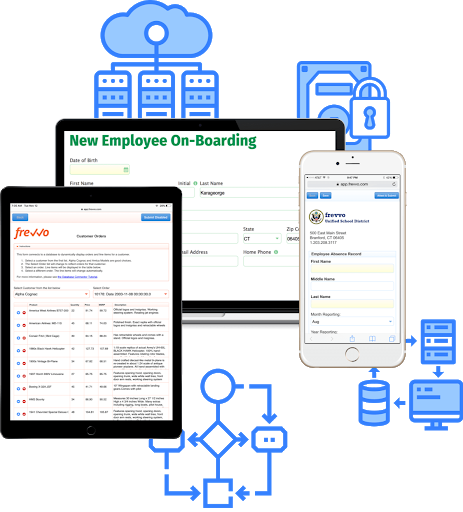You might think that the pandemic has slowed down entrepreneurs or limited their plans. But this is not the case. In fact, 51% of respondents in a 2020 survey said they identified a new opportunity during the pandemic, and it made them want to start their own business.
While starting a business can pay off, managing a remote team can be challenging for new business owners.
Every aspect of the traditional office environment changes when employees are spread over different cities, towns, and sometimes, even countries.
Here are 10 tips that will help you manage your newly assembled remote team.
1. Set the right foundation
A strong foundation is an indicator of a successful business, remote or not.
Entrepreneurs or small business owners need to conduct thorough research to formulate a remote business plan that includes:
- Business description
- Business goals
- Unique selling point (USP)
- Internal structure
- Work processes
- Financial projections
When all of these factors are planned comprehensively, starting a remote business becomes easier. A solid business plan helps founders secure funding since they can clearly explain what they’re going to do with an investor’s money or business loan.
2. Employee Management
From an employee perspective, a good business plan gives you a clear idea of the kind of remote team members you want to work with. Everything from the job description to the hiring process is efficiently crafted and executed.
However, before hiring team members, you need to decide how you will manage the back-end operations.
When starting a remote business, you often don’t have the time to individually manage all the paperwork, payroll, benefits, etc. In a traditional business, the HR department handles these tasks.
To reduce the burden on their shoulders, remote business owners should consider outsourcing their employee management.
When you don’t have administrative tasks to bog you down, you can focus on a potential employee’s skills, experience, and how they fit into your team rather than their paperwork.
3. The Right Software
Once you’ve got the best people working for and with you, the first step in ensuring they can do their job efficiently is providing the right software.
For general workflow management, you can choose a tool like Fleep that combines team communication, messenger apps, and video-calling platforms.

A dynamic tool like this helps streamline team communication, and gives everyone transparency regarding what’s going on in the company. It also enhances collaboration both within a team and between different teams.
PRO TIP: When you start a company room or workspace, create a channel for general conversation. This channel should ideally be for non-work chatter where people can connect.
You’ll also need to invest in a good CRM, spend management software, accounting software, project management software, an online course platform for training, mobile device management software for improved data security, and any other specific tool related to your niche or business.
4. Set Expectations
As the founder, everyone looks up to you, and most employees will likely be intimidated by you.
It’s vital that you actively create a friendly work culture where everyone is cordial without disregarding professional conduct.
The key to a good workspace culture is to set expectations early. You need to provide clear guidelines, set boundaries, and outline the basics.
One way to do this is to use cloud-based software to link to company information and guidelines.
You should also be on hand to answer queries quickly. This is especially important in the initial stages when you’ve just hired key team members like managers and team leads.
When higher-ups are well-informed and abide by your guidelines, it’s easier to form a culture where everyone understands the business’ goals and priorities.
5. Build Rapport

Entrepreneurs and business owners have to walk a fine line between building a friendly workculture while still maintaining their authority.
You want to come off as a genuine person that cares about their employees without crossing a line.
As stated earlier, a non-work channel for general chatter is excellent for this. You can share fun pictures, comment on things happening around the world (keep it light, though), host polls, share gifs and memes, etc.
As the company leader, you want those under your employ to come to you if they have any work-related problems rather than let things get worse in silence because they’re intimidated.
This could be a manager that has noticed an issue with the workflow or an employee that is having trouble focusing on their tasks.
6. Have Longer One-on-ones
When a team is fully remote, one-on-one meetings become an important part of connecting with employees.
You might already be having solo meetings, but remote companies require lengthier sessions.
A one-on-one is typically a feedback session, but the praise or complaints go both ways. A solo meeting helps you let employees know where they stand and clears any doubts about expectations and performances.
It humanizes you as well. You aren’t just seen as a money-hungry CEO or manager, but rather a leader that cares and wants to connect with their troops.
Encourage your employees to provide criticism or any suggestions for improving current work processes.
One-on-ones are also excellent for building rapport. All those random conversations that typical employees might have in the break room or at company events don’t happen for remote teams, which is why group or solo virtual meetings are so important for bonding. Get yourself one of the virtual meeting platforms that are available and start building rapport with your team.
7. Maintain Morale
Morale is an extremely important part of remote team management. You can bond, address frustrations, etc., via company events, retreats, or a nice office dinner in a traditional office.
You can’t do any of those things with a remote team, so you need to be creative.
Replace breakroom hangouts with a virtual one, like an hour-long coffee session once a week. Virtual games are also an option for team building.
Both remote and in-person companies can boost morale by sending gifts for important occasions or milestones.
Since you don’t know each of your employees’ likes and dislikes, you can send generic gifts (sweatshirts, t-shirts, coffee mugs, etc.), or you could offer them coupons to get discounts on whatever they want to buy.
8. Automate Remote Processes
Productivity is the backbone of business growth. As such, you and your team should constantly be working toward your goals rather than mindlessly busy with mundane tasks.
Every department can benefit from automating business processes.

Automation is crucial for companies that are just starting. Every day has a significant impact on the business. You don’t want your employees to focus on repetitive tasks or waste time moving files manually.
The goal is to keep your team working on as many impactful tasks as possible while automation handles the rest.
For example, your HR team will save time and can focus on employee management when processes like leave requests, sales orders, onboarding for new employees, etc., are automated.
9. Sales Development
New businesses heavily bank on sales reps to get new clients or client projects. An ineffective sales team or sales process can be the downfall of a company.
While sales executives capture leads, sales development representatives (SDRs) nurture them and move prospective customers down the sales funnel.
Given how crucial their role is, business owners and managers should build an SDR process that dictates team members’ roles and responsibilities.
Arguably the hardest part of the SDR process is prospecting — when the team sends emails, makes phone calls, and utilizes social selling to create opportunities to close the deal.
You need to clearly define each aspect of this process with your SDRs in detail and provide them with the right tools to get the job done. For example, an email verifier can help SDRs speed up outbound emails and ensure they’re not wasting time.

Your SDR process involves many other elements and is likely to keep changing with current market trends. Be sure to design every element efficiently and make sure you answer any questions upon implementation.
10. Schedule Annual In-Person Meetups
There’s only so much you can do over video calls and chat. Nothing beats getting everyone together in person at least once a year.
You can shell out for a company trip to an exotic location or organize a meet-up at a location that is close to everyone.
It’s like a mini-vacation with your coworkers. Spirits are usually high, conversations flow, and you can have epic discussions about anything from time travel to company culture.
You can use a part of the meet-up to show gratitude for your employees.
It’s also a great opportunity for team bonding. Some companies plan team icebreaker games during retreats for a little bit of competitive fun.
When planning company meet-ups, don’t plan strict schedules. You can plan some activities but leave enough space for employees to actually enjoy themselves.
If your remote team is scattered around the world and can’t all travel to the same destination, you can encourage smaller groups to meet at a convenient location once or twice a year.
Conclusion
Remote teams are the way of the future. Many studies of employees and CEOs have found that a significant portion of the workforce wants to stay remote, even after the pandemic subsides.
Entrepreneurs have a unique business opportunity in front of them — they can create diverse remote teams that work just as well or better than an in-person one while saving money on startup and overhead costs.
Of course, your remote teams require just as much management and guidance. We hope the tips we’ve provided help you become an even greater leader.

